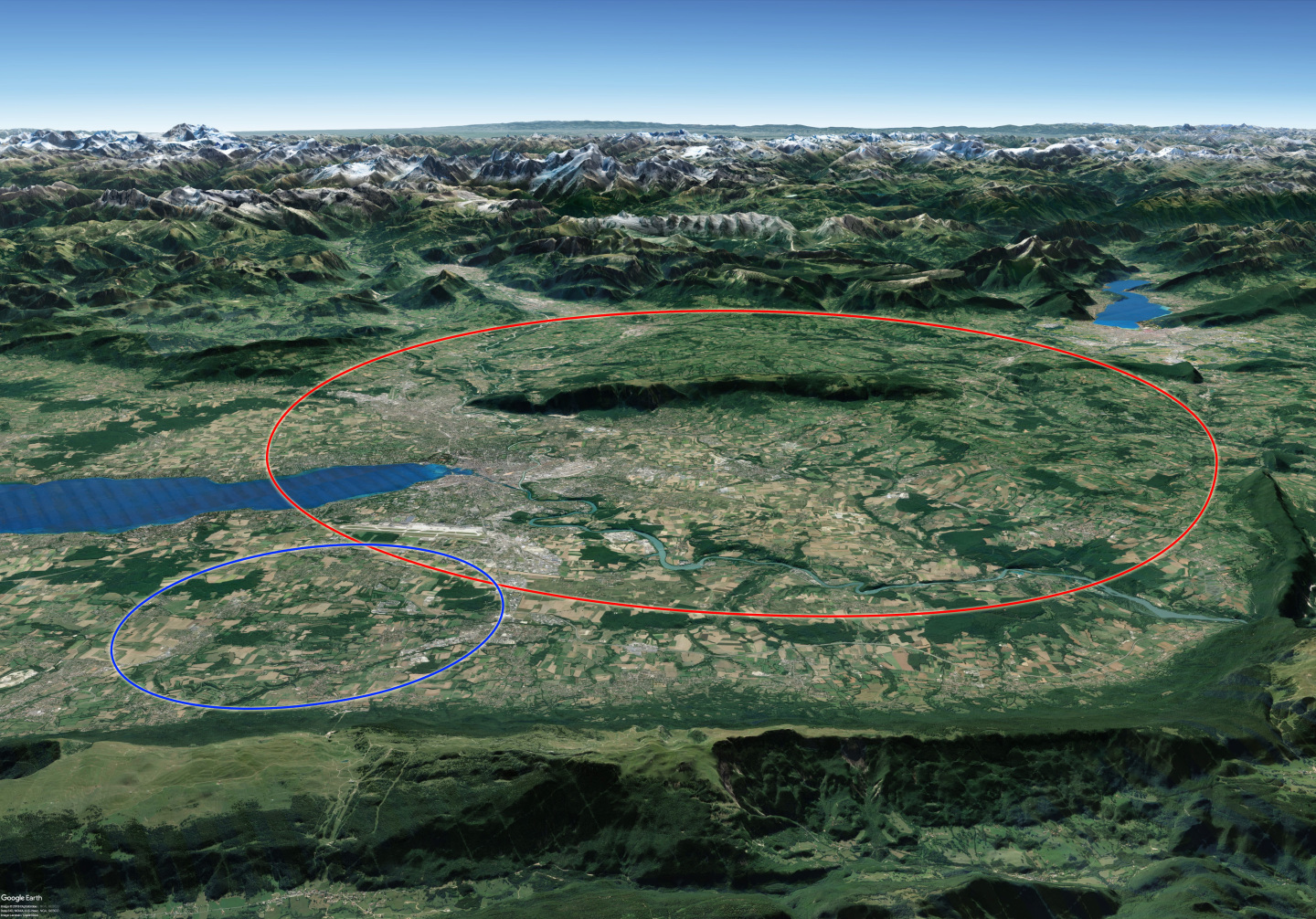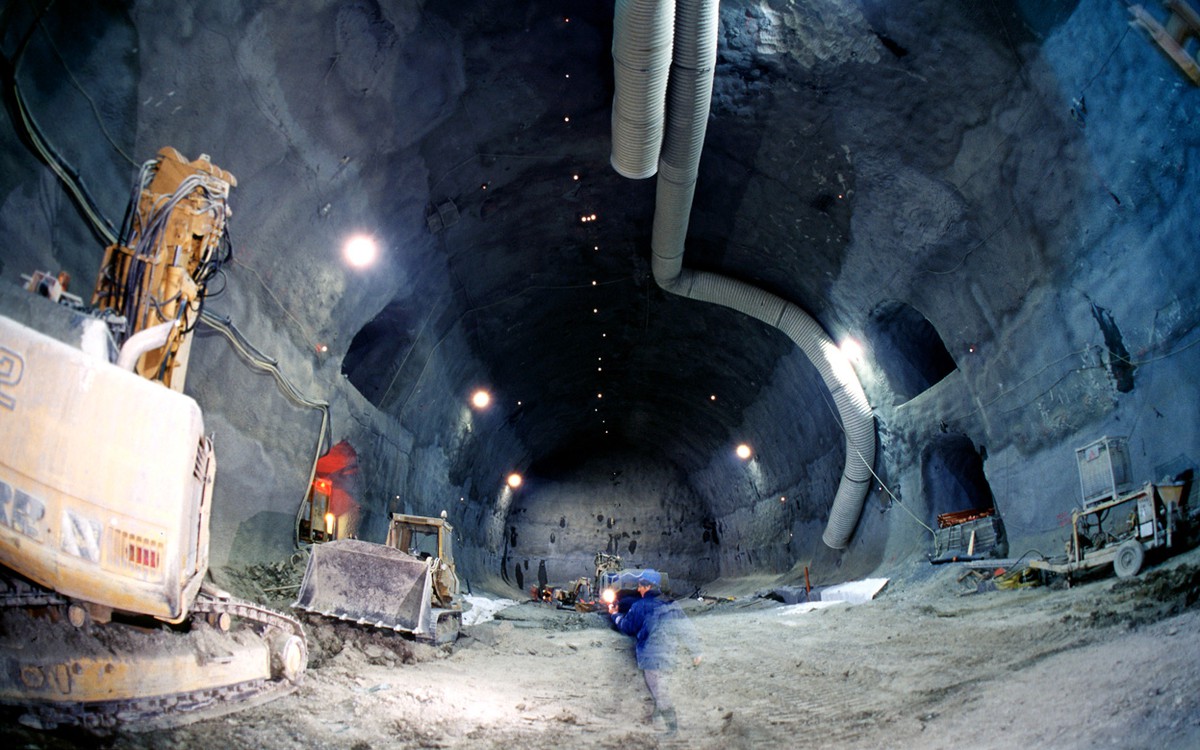Skip to main content
An important part of the FCC Study is finding a suitable location for the collider ring and quantifying the the civil engineering efforts required for a 91 km long tunnel, access shafts and experiment caverns. Future energy and intensity frontier circular colliders would require the third longest tunnel in the world.
The process of identifying a candidate site needs to integrate numerous aspects, ranging from geological conditions, environmental issues and infrastructure requirements. Scientists are collaborating closely with geologists and civil engineers to define the requirements of each of the three scenarios (hadron-hadron, electron-electron, and hadron-electron collider). Given the value of the common assets that the worldwide science community has created at CERN, the first investigation has focused on the Geneva basin. An important early product from the collaboration with civil engineers and consultancy companies from Switzerland, UK, and France was a three-dimensional model of the cretaceous-tertiary and tertiary-quaternary interfaces in the area. In addition to this, a new planning and risk assessment tool has been developed that allows the identification of the optimal size, position, and orientation for large-scale underground civil engineering projects like the FCC.

This digital approach for the FCC feasibility study, has enabled civil engineering teams to extract the maximum value from the large amount of data that is available about the terrain, geology, hydrology, environment, and urban environment of the Geneva basin. This data even includes man-made hazards such as underground pipelines and geothermal boreholes used for residential heating.
The FCC study wants to couple scientific discovery with environmental sustainability. Building this collider and the infrastructure related to it would create about 9 million cubic metres of excavated materials, mainly molasse. The FCC study does not want to treat this material as waste but as a resource and CERN, together with Montanuniversität Leoben and with the support of the EU-funded H2020 FCCIS project, has launched the Mining the Future contest. This contest seeks to identify sustainable reuse solutions for the excavated materials as well as draw a roadmap for wider applications beyond this specific project.
Key Challenges:
-
Development of computer-assisted planning and costing tools for civil engineering projects
-
Definition of infrastructure requirements (accelerator tunnels, large detector caverns, injection tunnels, services etc).
-
Feasibility and initial cost assessment of a 100 km long tunnel infrastructure
-
Development of a construction and installation concept and schedule

